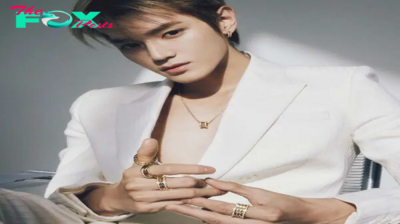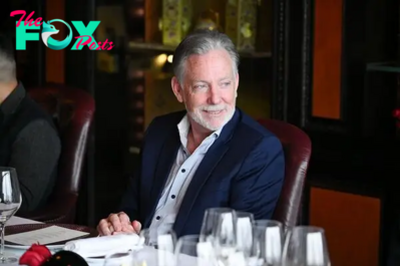Lifestyle
Patrons of the Arts: 15 of Hong Kong’s Biggest Art Collectors, Revealed
Collecting paintings, sculptures, calligraphy and other works is no new passion in Hong Kong, as this list of prominent local connoisseurs attests.
CK CHEUNG
Not all collectors are open about the real extent about their art collecting – and that’s certainly the case with real-estate tycoon Chung-kiu “CK” Cheung and his wife Cecilia. The duo are undisputedly among the upper ranks of the world’s most prolific collectors and though they’ve divulged little about their private collection, it’s possible to trace just how incredible their collection is from the record of art patronage that follows them. In May 2019, the couple acquired for the Van Gogh Museum a letter written in 1890 by the Impressionist artist to the art critic Albert Aurier, who was the first to review the artist’s work. The Cheungs have also sponsored major exhibitions around the world, including a show on Chinese artist Chao Guo-Qiang, known for his unconventional mediums such as gunpowder, at the Galleria degli Uffizi in Florence in 2018. Closer to home, the couple sponsored a major Claude Monet retrospect at the Hong Kong Heritage Museum in 2016, which included major loans from the Musée d’Orsay as well as private collections. Not just passionate about collecting art, Cecilia has also made her mark as a budding artist. She debuted her solo show, Sublimity, at Sotheby’s Hong Kong, which features works inspired by her Travels.
ADRIAN CHENG

Real- estate tycoon, art patron, entrepreneur and philanthropist Adrian Cheng is the executive vice chairman and CEO of property developer New World Development and executive director of Chow Tai Fook jeweller, both founded by grandfather Cheng Yu-tung. Cheng also famously oversaw the US$2.6-billion redevelopment of Hong Kong’s Tsim Sha Tsui waterfront, which now comprises K11 Musea, K11 Artus, K11 Atelier, Rosewood Hong Kong and the Avenue of Stars tourism hotspot. A lover and collector of contemporary art, Cheng is also an arts patron through his K11 Art Foundation, which has backed a series of innovative exhibitions, and the K11 Craft & Guild Foundation, which works to conserve Chinese craftsmanship. He’s particularly passionate about increasing the visibility of Chinese contemporary art. “Emerging artists have high potential, but sometimes they’re under the radar, because China is very driven by the auction market and by what’s commercial,” he explains. “I’m not a gallery. I don’t sell any of the artworks. K11 is a non-profit art foundation registered in Hong Kong, but we cover greater China, Hong Kong, and Taiwan.” K11 Foundation’s collection focuses on international artists, such as Yoshitomo Nara and Olafur Eliasson, while his own collection includes a wide range of artists, such as Zhang Enli and Zhang Ding.
EVAN CHOW

One of Hong Kong’s most prominent art collectors, Evan Chow is a managing partner of MCL Financial Group as well as member of the Li family who founded the Bank of East Asia. Chow is exceptionally influential – he’s a trustee of the New York Museum, a member of the Asia Pacific Committee at the Centre Pompidou in Paris and a founding patron at Hong Kong’s M+, among other roles he holds in the art world. Since starting his collecting journey in 2013, he’s amassed a collection of over 200 artworks. “I’ve always had a strong enthusiasm for art and culture,” he says. “Growing up surrounded by the Chinese works of art and ink paintings assembled by the older generations in my family, I was intrigued to start an art collection of my own”; the first work he bought was a print from Zhang Xiao-gang’s signature Bloodline series. An education in the US further broadened his scope of appreciation to include classic and contemporary art in the West. “I’ve a particular liking for Geometric Abstraction, an art movement that’s often overshadowed by its counterpart in abstract art,” Chow says. His favourite and most prized work is by minimalist contemporary artist Donald Judd. Today, a major part of his collection is dedicated to Hong Kong artists and spans paintings, sculptures and installations. “It’s important to be able to relate to the artworks in my collection and that’s been a key motivation in my philosophy of collecting,” Chow says. “I realise the importance of art as a storytelling vehicle for the future generation and hence I’m building a collection that can reflect the zeitgeist of our time these days.”
SHANYAN KODER

Shanyan Koder will tell you she grew up breathing art. Her father is Hong Kong Businessman Canning Fok, who’s among the city’s most prolific art collectors. And growing up, Koder not only learned to appreciate art, she also helped her family acquire its ever-growing collection. Her family’s collection began with the Impressionist period. As Koder recalls, “I grew up particularly drawn to Degas as a painter and a sculpture and loved his pastel works on paper of ballet dancers.” From Renoir, Pissarro, Monet and Degas, the family moved into Post-Impressionist and Modern masters such as Chagall, Matisse, Van Gogh and Picasso. Koder now takes on a prominent role in representing her family’s collection, which has evolved to include Surrealists Dalí and Magritte, Chinese masters Chen Yifei and Sanyo, and contemporary masters such as Warhol and Basquiat. For her own personal collection, Koder says it’s a reflection of herself over time, with each art piece evoking certain emotions and reminding her of certain times in her life. “It’s a mixture of emerging and established contemporary artists, following a more classical aesthetic,” she says. She collects from a range of art practices, such as paintings, sculpture and installation, abstract and figurative. “Each work I own carries a sense of the classical, a touch of romance. If you look at the art in my collection I think you’ll see elements of History – hints of faith, celebrations of the beauty of the human figure, the beauty of life and death.” Koder is a well-known voice in the industry and runs several art Businesses, including HUA, a Chinese contemporary-art digital platform she founded, and providing professional and bespoke art services for new and established collectors.
ARON HARILELA

Chairman and CEO of the Harilela Group of companies, Aron Harilela led the company into hotel management for the first time with The Hari in London in 2016, following it up with the opening of a Hong Kong property in 2020. An avid collector, Harilela has ensured that art is central to the DNA of The Hari brand and is a core pillar of its Hong Kong hotel, where a rotational showcase of artworks is curated by London-based A Space for Art and the Pontone Gallery. Passionate about offering a platform to emerging talents, he also founded The Hari Art Prize, which is open to art graduates, self-taught artists and those within the first 10 years of their career, enabling them to hone their skills while contributing to the vitality of Hong Kong’s art scene. Works of contemporary art created using a variety of media, from painting and photographs to wooden sculptures and digital film, are displayed in public areas and guestrooms in both Hari hotels; standouts among the pieces in The Hari Hong Kong are the mirrored stainless-steel sculpture Monumental Melt by the Bulgarian-born Rado Kirov, String Hands by the Korean Hong Sungchul and the digital piece New Kiss by fellow Hong’s fellow Korean Lee Jeonlok. Artists in residence have also been appointed, with Hong Kong art-prize runners-up Jacky Tao and Jason Ho being jointly appointed to the position last year, after which their work will be displayed in the hotel’s public areas for three months.
PANSY HO

The chairman of MGM and the billionaire daughter of Stanley Ho, Pansy Ho has long made her mark as an arbiter of style and taste, with a strong love for art. As a teenager, she went against her father’s wishes that she study for a Business degree, instead attending the liberal-arts Vassar College in New York State. Her artistic philosophy permeates her work ethic, and her passion for art is found in all areas of her MGM properties through the increasingly important Chairman’s Collection. Established in 2015, it’s grown from a bespoke collection of 10 works of art to more than 300. Helping Ho build the collection is long-term art advisor and 3812 Gallery co-founder Calvin Hui, whose acquisitions include leading Chinese abstract artist Hsiao Chin’s 9-metre- long painting Dancing Light, a site-specific work that now lives at the MGM Cotai resort. Hui is also a keen advocate of Chinese culture through art, with a particular eye for works of Eastern origin and contemporary expression. Art on display includes Li Hongwei’s Allegory of Balance #1, Liu Jianhua’s ceramic installation Collected Letters (2016) and Xue Song’s Eight Views of Macau. Ho has also curated exhibits beyond MGM, including a “one belt, one road”-themed exhibition of works by 15 women artists in 2016, underscoring the importance of the original Silk Road and cultural heritage through calligraphy works, paintings, photographs, sculptures and installations. Among the artists on show, at Sotheby’s Hong Kong, were Peng Wei, Yayoi Kusama, Chong Siew Ying and Yelena Popover.
LI KA-SHING

Nicknamed Superman, Li Ka-shing is one of Asia’s most influential businessmen. Now Hong Kong’s richest citizen, he’s also one of the city’s biggest art collectors, so much so that he opened a Buddhist art museum in 2019. The 2,230-square-metre Tsz Shan Monastery Buddhist Art Museum near Tai Po cost the Li Ka Shing Foundation more than HK$3 billion, including the land and operating expenses. Its collection includes 100 Buddhist statues and 43 handwritten scriptures, most of which were personally donated by Li from his impressive collection over the years. Featured display items include a standing Shakyamuni Buddha from ancient India dating to the second century CE and a 1,000-year-old seated Guanyin Bodhisattva statue from the Liao Dynasty. During the museum opening, Li said people needed answers to existential questions, to find their direction and thrive together. “For me, Buddhist philosophy has guided me through apprehensions, fears and vicissitudes,” he said.
THOMAS LAU
The most serious of collectors are also the most private. Billionaire Business magnate Thomas Lau has never shared what he owns, though the size and significance of his collection has been corroborated by those in the know. He may never confirm it himself, but the industry considers him an absolute powerhouse on the international circuit. Lau shares the same passion for art as his older brother, Joseph Lau, who’s also featured on this list. The younger Lau is the chairman and CEO of Lifestyle International Holdings, which operates Sogo, one of Hong Kong’s largest department stores.
JOSEPH LAU

Former chairman of property developer Chinese Estates, Joseph Lau is one of Hong Kong’s most prolific collectors, with Forbes estimating the total value of his art collection at around a US$1 billion. And it’s not just the value that’s impressive. His collection includes the painting Everything Must Go (1984) by Jean-Michel Basquiat, Andy Warhol’s Mao (1977), which he scooped up for US$17.4 million at Christie’s, and Paul Gauguin’s Te Poipoi (1892), which set him back US$39.2 million in auction at Sotheby’s. In 2020, Lau’s David Hockney painting The Splash (1966) was sold at a Sotheby’s contemporary art sale in London for US$29.9 million, the third-highest price ever achieved for a Hockney at auction. “The name Joseph Lau resonates with collectors around the globe and it’s one that stands for excellence,” said Nicolas Chow, chairman of Sotheby’s Asia, adding that Lau owns “one of the finest collections of Chinese porcelain ever”. And it doesn’t stop there. Lau also collects red wine, with his collection spanning more than 10,000 bottles. In 2020, a lot of Lau’s French wines sold at auction at Sotheby’s in Hong Kong for US$6.8 million – more than twice its pre-sale expectations.
ALAN LAU

Alan Lau has a firm grasp on both the tech and the art world. He gained a wealth of tech expertise working with various Chinese companies before assuming the role of chief business officer at Animoca, a Hong Kong based venture-capital and game software company. But, as he likes to put it, his “spare time” is dedicated to art. Stemming from his belief that art is more than just images or objects, his collection is an eclectic mix of physical art, performance art and digital art. His personal collection includes some of the art world’s most desired pieces: Ai Wei Wei’s painted-over 5,000-year-old neolithic urns, dripping in industrial ink to symbolise destruction and rebirth; Austrian artist Erwin Wurm’s One Minute Sculptures, where the viewer has to become part of the art by stacking tennis balls with their forehead; and Haegue Yang’s Sonic Dance – Twin Sister are just a few of the major pieces scattered around his Wong Chuk Hang trove. When NFTs burst on to the scene, Lau was among the first to explore art tech and its place in a more traditional art market. One of his earliest NFT purchases was from Sotheby’s, a piece of The Fungible by the pseudonymous digital artist Pak. Made from thousands of digital cubes that would come together to form the complete art, the project was a clever play based on game theory. Lau also serves as the vice-chairman of M+ and played an important role behind the museum’s Yayoi Kusama exhibition last year, one of the largest shows of her work outside of Japan. His influence extends beyond this city: he’s also the co-chair of the Asia Pacific Acquisition Committee of London’s Tate Modern and the Asia Art Circle of New York’s Guggenheim Museum.
WILLIAM LIM

Architect, artist and collector William Lim is one of Hong Kong’s biggest art aficionados. In 2021, he and wife Lavina donated more than 90 pieces by 26 artists from their Living Collection, the world’s largest private collection of art from Hong Kong, to M+ museum. “Lavina and I started to collect Hong Kong artists’ work in the mid-2000s, just as the city’s art scene was becoming more international,” Lim says. “We focused on Hong Kong artists because, at the time, there was little attention given to them.” And it wasn’t just local artists who caught Lim’s attention – he also started collecting items and antiques. “Sometimes, I’d also pick up a locally made product, something like old vintage Hong Kong clock that I find interesting”. But Lim’s love for collecting started way before then. “When I was a teenager and started to travel, I’d collect something artistic from that place. So that kind of went on, and everywhere I went, I’d buy something.” Now one of the city’s biggest collectors, Lim strongly believes you must collect with passion, genuinely loving the art you’re collecting. “You don’t collect because you want to make money,” he says. “There are probably much better ways to make money, like investing in Bitcoin. But for collecting, you must really like it. And I believe you have to focus on something. It could be very trivial – it could be match boxes or Coke bottles. But if you can focus on it and really give it your everything, it can eventually make a great collection.”
ALAN LO

One of Hong Kong’s most enthusiastic supporters of the arts, F&B entrepreneur Alan Lo’s interest in paintings began with his family’s own collection of Chinese ink-on- paper works. An avid art collector himself, he’s also a committed supporter and promoter of the arts who serves on various art and culture organisations and museum committees: he’s chairman of both the Design Trust and Ambassadors of Design Hong Kong, a member of Art Basel’s Global Patrons Council, the Tate Asia Pacific Acquisition Committee and a board member of Para Site. His love for art derives from his family, who are renowned collectors. “I grew up in a collecting family,” he says. “My father’s been collecting 20th-century ink-on-paper for the last 40 years. My family collection has more than 1,000 works.” But it’s not just about beautiful art and impressive collections. Lo believes these collections are vital in preserving history and educating new generations. “Every city needs arts and culture in order to be balanced,” he says. “It’s both for us and for the younger generation. It’s about educating the wider public.”
PATRICK SUN

Patrick Sun set up the Sunpride Foundation in 2014 with the aim of advocating for LGBTQ+ people through art, believing in its power to communicate, inspire and help bring about positive change. Established through the foundation, the Sunpride Collection is designed to raise visibility and respect for the LGBTQ+ community by collaborating with museums to stage art exhibitions – thus, every work in the collection is intended to be exhibited and viewed publicly. Sun says “queer Asian art” is probably the most straightforward way to describe the collection – “queer” in the sense that the artists identify themselves as LGBTQ+, or the artwork has an LGBTQ issue-related theme, with “Asian” meaning they’re from Asian countries, territories or diasporas. The first piece it acquired was Ordeal by Roses, Japanese photographer Eikoh Hosoe’s 1961 portrait of the gay icon Yukio Mishima, while Sun says most prized work in the collection is Bhupen Khakhar’s 1998 oil painting, Visitors – “and not just because of its value in monetary terms”. Sun had hoped to acquire a substantial Khakhar painting after seeing a 2016 retrospective at Tate Modern, and when subsequently in London, he discovered that Visitors would soon be auctioned by Sotheby’s. At a private viewing he learned from the auction house’s specialist that Khakar only began portraying his life as a gay person after his mother had died, just as Sun had refrained from establishing Sunpride until after the death of his own mother – a deep and touching synchronicity that was simply too strong to resist.
HENRY TANG

Former politician Henry Tang, Hong Kong’s Chief Secretary between 2007 and 2011, is all about the arts these days, now serving as chairman of the West Kowloon Cultural District Authority. “I feel very, very strongly that art and culture will become a very new industry for Hong Kong to be engaged in,” he said during an interview. “This industry will bring economic development to Hong Kong and, in the future, will engage, and offer opportunities for all walks of life. Both in terms of audience, participations, as well as opportunities for our youth.” Over the years, his passion for art has turned him into a private collector. “I’m always fascinated by artists who dare to challenge the status quo in their vision and development of new concepts,” he revealed. Tang comes from a family of noted collectors and has a particular interest in 20th-century modern works, from the post-war period to contemporary art. He believes collectors should start from the heart, and not be driven by trends or investments. “Follow your heart and perhaps set a goal and budget first if you want to start building your art collection,” he says. Among the names he’s recently championed is the Chinese abstract artist Hsiao Chin, whose work he collects avidly, being drawn to it through Hsiao’s use of “the colours of purity, transformation and rebirth”, which Tang believes are manifestations of the artist’s spirituality.
WILLIAM ZHAO

William Zhao is the Hong Kong-based art collector behind the Z Collection who, since moving to Hong Kong in 2004, has become an independent critic and a leading contributor to the city’s art scene. An art-lover since he was a child, he went to France to pursue his studies and had a career in finance before returning to art. He’s perhaps best known for his involvement with an exhibition entitled Framed: Ai Weiwei and Hong Kong Artists, which brought together the work of the Chinese conceptualist and a number of artists from the territory including Ho Sin Tung, Tsang Kin Wah, Kum Chi-Keung and the Map Office collective. In 2023 he was invited to curate a young artists’ group show at PACE HK gallery. Zhao lives with his art: his amazing collection is displayed around his house in impressive salon hangs that feature pieces by Danh Vo, Carol Rama, Joseph Beuys, Elisabeth Peyton, Lee Kit, Neïl Beloufa and Firenze Lai. A huge proponent for collecting what you love, Zhao acquires his art based on feelings and ideas rather than any particular themes. He’s also an avid collector of antiques and furniture. At home, his Danh Vō Alphabet coffee table is anchored by a 1950s leather and teak sofa by Danish cabinet makers Niels Fodder and a pair of Finn Juhl sculptural chairs he acquired from Hostler Burrows.
-

 Lifestyle40m ago
Lifestyle40m agoMahira Khan reacts to Arijit Singh's 'Zaalima' shout-out
-

 Lifestyle40m ago
Lifestyle40m agoAtif Aslam lights up Ambani's pre-wedding soiree in London
-

 Lifestyle1h ago
Lifestyle1h agoBusiness Monday: Working and playing into your 90s – Mary T. O’Sullivan
-

 Lifestyle3h ago
Lifestyle3h agoQT Bring some amusing shenanigans to your baby shower to join in on the joy
-

 Lifestyle3h ago
Lifestyle3h agoST “Capturing Cherished Moments: Joyful Laughter with a Newborn That Will Enchant and Endure as Unforgettable Memories” ST
-

 Lifestyle5h ago
Lifestyle5h agoCecilia Rose shows off her perfect body in a beautiful brown swimsuit
-

 Lifestyle5h ago
Lifestyle5h agoCecilia Rose is like a goddess who captivates all men
-

 Lifestyle5h ago
Lifestyle5h agoDrake Praises Taylor Swift as ‘the Biggest Gangster in Music. nobita



















